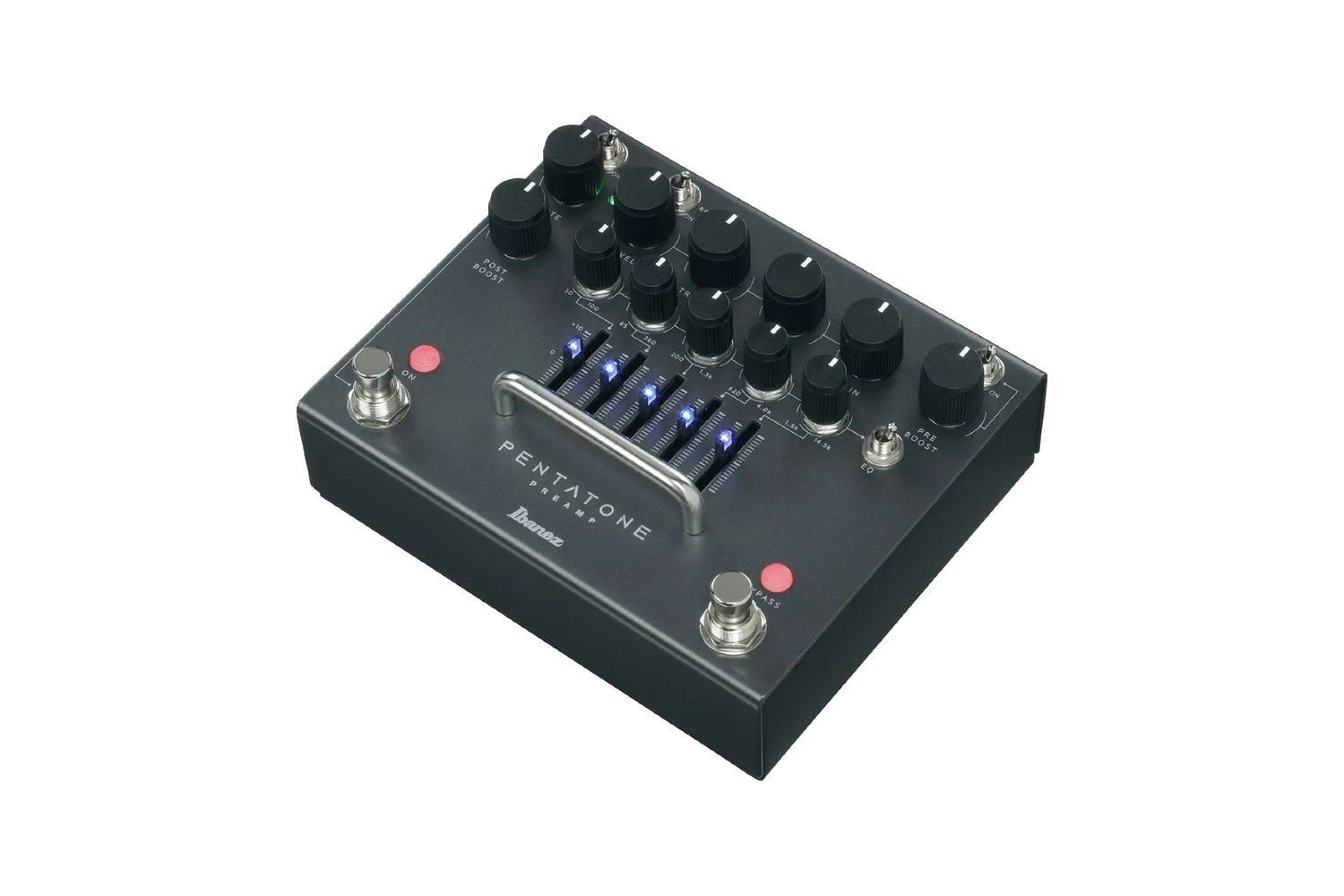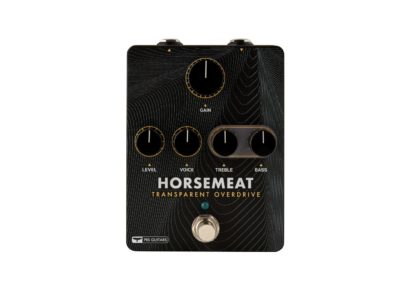Australis Music | RRP: $399
Ibanez are arguably most famous for the Tubescreamer. The Tubescreamer is a three knob overdrive pedal designed to offer a particularly ‘tubey’ sound, or allow you to push a tube-based amplifier into new territories, so it’s no shock that they continue to push the boundaries of guitar stompboxes. Most recently, they’ve done this with the Pentatone Preamp pedal, a mono preamplifier pedal with drive, dual EQ and a noise gate available. The Pentatone is designed to shape and sculpt your tone from the get go, refining your tone before it moves onto different effects and flavours of drive, and eventually an amplifier. You can also control the pre-boost or five-band parametric EQ via an additional footswitch in the ‘Remote’ input. The Pentatone Preamp will take up some pedalboard real estate, but can also replace a handful of pedals with its features so you won’t be left high and dry. The Pentatone offers a whole heap of well laid out and useful options, so it can integrate into an existing pedalboard or become the centrepiece of your sound.
Read more gear reviews here.
The Ibanez Pentatone Preamp features ¼” input and output on the top of the rugged metal chassis. Once signal hits the pedal, it moves through the Pre-Boost, which is switchable and allows you to adjust gain before the signal moves to the EQ and additional drive. There’s an additional ‘Gain’ control, Bass and Treble controls and a ‘Bright’ switch, which makes your tone… uh, brighter. While all of these are pretty standard fare, the additional 5 band EQ is where the Pentatone really shines. The 5-band EQ, with a toggle switch to turn it on and off, has 20dB of gain available, i.e. you can boost or cut 10dB either way from zero, but also has sweepable frequencies for each band, so you can really hone in on that holy grail of sculpted tone. Starting at the low end, you can boost between 30Hz and 100Hz, and the top end allows for 1.5khZ-14.5kHz. The three bands between those are where the magic really happens on a guitar, and there’s enough overlap to begin to sculpt some really interesting curves even before other pedals and effects. Simultaneously boosting and cutting similar frequencies in different bands can begin to manipulate the bell curves that these EQs introduce, for tighter response when you need it. This technique is commonly used in mixing and production when using Pultec style EQs, as the boost and cut curves aren’t symmetrical and result in unique little ‘humps’ of frequency information that really let tones shine through, inhibited by surrounding noise and mud.
Beyond this, there’s a noise gate, which again can be toggled on and off and is a single knob affair, and the Post Boost can be stomped on and off, need be. The 5-band EQ and Pre-Boost can be remotely turned on and off via an input on the top of the chassis with the Ibanez IFS2L external footswitch or similar. Ibanez have graciously included a little diagram on the chassis itself for those of us brave enough to build our own TRS cables to connect to more complex switchers!
Once you’ve got your head around the layout of the Pentatone, the concocted tones are as classic or unique as you like. Something about Ibanez’s designs lends the Pentatone well to that Tubescreamer-style sound, but the additional EQ and boost stages offer some more refinement, especially to those who are using power amp pedals for touring rigs. A combination of Pre Gain and Post Boost can easily result in a modern metal sound, while either alone can push your sound into bluesy territory or classic rocky chime. A little research can help you in using the 5-band EQ to shape the Pentatone into different amplifier style sounds, i.e super scooped for modern American, Mesa Boogie style tones, and pushing different areas of the mids can help you move from Marshall to Orange to glistening Vox sound in seconds. The Post Boost is handy for harnessing for amplifier drive, allowing you to clip the input of your amp with the Post Boost dimed (and have that footswitch handy to toggle this on and off!)
The Pentatone Preamp Pedal from Ibanez looks like a whole lot of options, which it is, but once you get to grips with the layout, it all makes sense. It’s more like an amplifier than it initially seems, with pre gain, EQ and post gain controls at its core, with some handy ways to refine your sound along the way. It’s great as a stand alone gain pedal, or as a boost, or as your primary sound for someone using compact power amps like the Orange Pedal Baby, EHX Magnums or a Seymour Duncan Powerstage. It integrates well with other pedals, and while it can be an all encompassing solution to most gain needs, it has handy controls to switch things on and off as you need them. The five band EQ is a great ‘always on’ style addition, but the amount of control allows you to really push the boundaries and use it as a boost for solos, or for unique moments like radio and telephone effects when the highs and lows are cut entirely. The control allows you to shape your tone to a room, ensuring you sound consistent night after night. Different rooms contain different nodes and nulls, and a little EQ can help you to give the noise gate a good signal to clamp down on if you need it. The gain it offers is familiar, tried, and true, but the options within the Pentatone’s little chassis push it into a league of its own.
For more information, head to Ibanez. For local enquiries, check out Australis Music.

